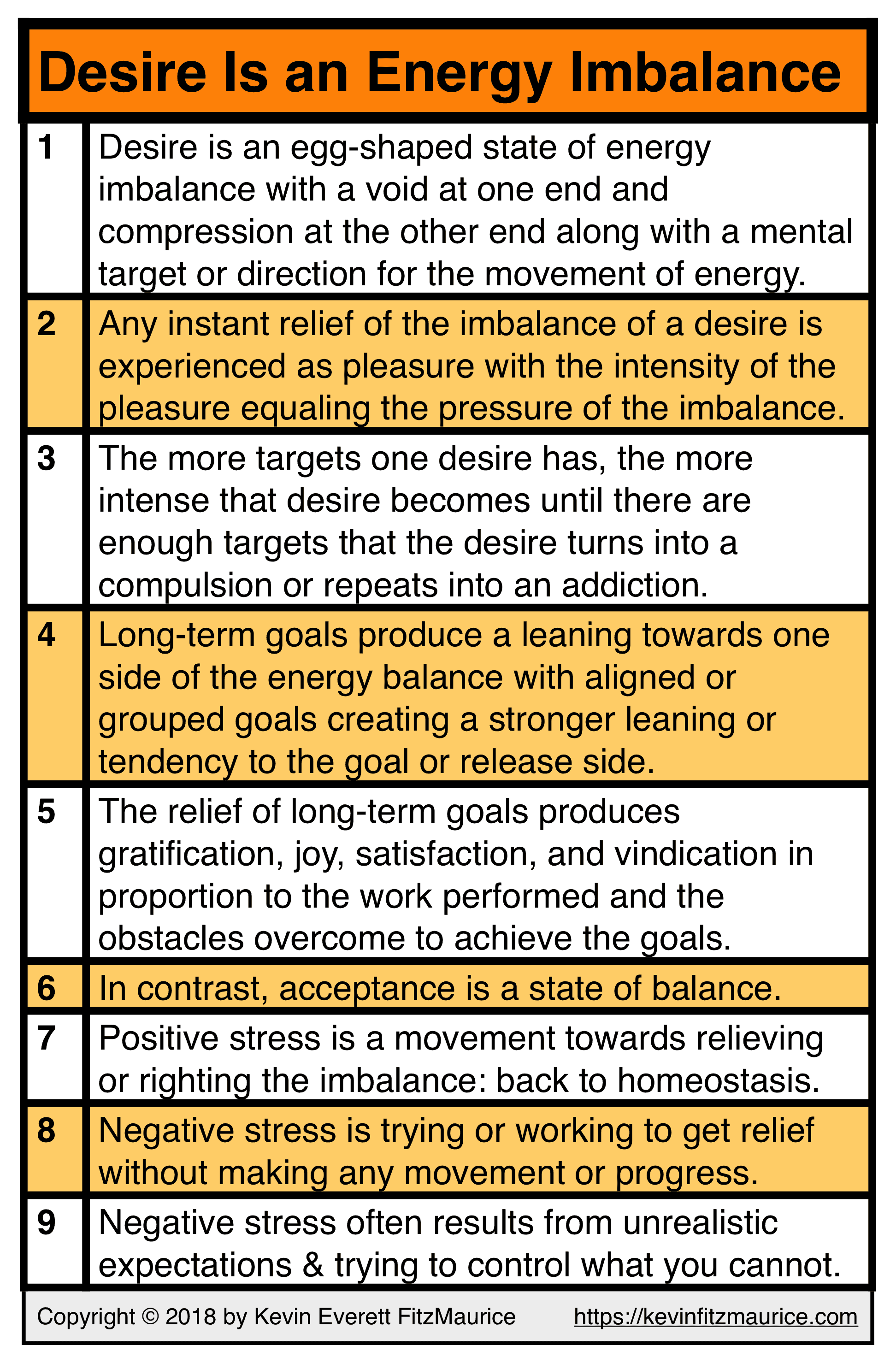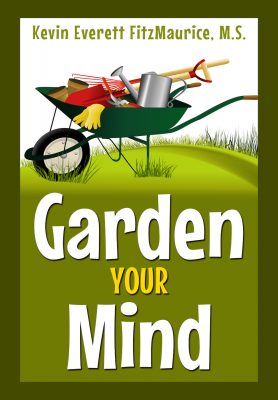Compulsion & DesireAddiction & DesireTable DesireRelated Pages6 Groups of Topics10 Skills & Topics
Desire Leads to Compulsion, Leads to Addiction
- Garbage Rules will prod you to face the self-defeating thinking that’s keeping you addicted.
- Ego will help you to understand and overcome the underlying problem of your addiction.
“Everybody’s main actions are determined by desires which are anterior to the calculations of pleasures and pains.” —Bertrand Russel, History of Western Philosophy
“I count him braver who overcomes his desires than him who overcomes his enemies.” —Aristotle
“There is often less danger in the things we fear than in the things we desire.” —John C. Collins
- Read and discover the best understanding of stress and how to use it.
Desire Is an Energy Imbalance
- Desire is an egg-shaped state of energy imbalance with a void at one end and compression at the other end, along with a mental target or direction for the movement of energy.
- Any instant relief of the imbalance of a desire is experienced as pleasure with the intensity of the pleasure equaling the pressure of the imbalance.
- The more targets one desire has, the more intense that desire becomes until there are enough targets that the desire turns into a compulsion or repeats into an addiction.
- Long-term goals produce a leaning towards one side of the energy balance with aligned or grouped goals creating a stronger leaning or tendency to the goal or release side.
- The relief of long-term goals produces gratification, joy, satisfaction, and vindication in proportion to the work performed and the obstacles overcome to achieve the goals.
- In contrast, acceptance is a state of balance.
- Positive stress is a movement towards relieving or righting the imbalance: back to homeostasis.
- Negative stress is trying or working on getting relief without making any progress.
- Negative stress often results from unrealistic expectations & trying to control what you cannot.
Desire Becomes Compulsion Becomes Addiction
- A desire becomes a compulsion by having several simultaneous goals or objects to obtain.
- A compulsion becomes an addiction through practice.
- The more you repeat a compulsion, the more likely it will become an addiction.
Difference Between Compulsion & Addiction
- A compulsion feels like an irresistible urge to do something right now.
- An addiction is when you have a habit of giving in to a compulsion to do a specific thing like drinking alcohol, gambling, or overeating.
- Desirers are easier to deny than are compulsions, which are easier to deny than are addictions.
- Starving still works. Starve them out.
- Waiting 20 minutes for them to pass still works.
Habit Is the Big Problem
- The problem is in the addiction as a habit, because the habit will come back again and again just because it is a habit.
- You need to replace the destructive habit with a useful habit.
- You need to remove and replace everything that you reasonably can that is associated with the destructive habit.
- You need the addiction triggers to clue you to practice your program of recovery.
- In the end, habit is the problem, and habits take conscious work and repetition to change (switch away from).
- Read and discover the best understanding of stress and how to use it.
Desire, Homeostasis, Stress, & Energy
- Click for the book to understand balance and stress.
- Read and discover the best understanding of stress and how to use it.
Related Pages of Free Information
- Attachment to Desire Is the Problem, Not Desire
- Becoming Is the Enemy
- Description: Ego
- Description: Self: Who Am I?
- Cause of Suffering
- Coping Skills: Free Help
- Meditation Simplified
- Recovery Issues: Free Help
- Unconditional Self-Esteem: Defined
- Unconditional Self-Esteem: Examples
- Unconditional Self-Esteem: Reasons for
- Universality (one human nature): Way of Peace
- Read and discover the best self-help system using CBT & REBT.
- Read and discover the best understanding of stress and how to use it.
6 Groups of Topics Menu
- 1. Pages by Topic
- 2. Fast-Facts by Topic
- 3. Quotations by Topic
- 4. Poems by Topic
- 5. Scripture by Topic
- 6. Websites by Topic
- Read and discover how CBT, REBT, & Stoicism evolved into one system: STPHFR.
- Read for the best breathing exercises for your feelings and stress.
- Read and discover the best understanding of stress and how to use it.
9 Skills & Topics Menu
- 1. Anger Skills & Topics
- 2. Blame Skills & Topics
- 3. Communication Skills & Topics
- 4. Coping Skills & Topics
- 5. Counseling Skills & Topics
- 6. Praying Skills & Topics
- 7. Recovery Skills & Topics
- 8. Responsibility Skills & Topics
- 9. Thinking Skills & Topics
- Read and discover how CBT, REBT, & Stoicism evolved into one system: STPHFR.
- Read for the best breathing exercises for your feelings and stress.
- Read and discover the best understanding of stress and how to use it.





